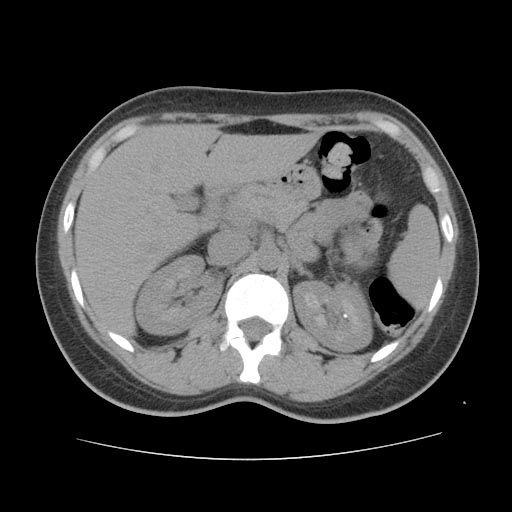Nephrocalcinosis: Difference between revisions
No edit summary |
No edit summary |
||
| Line 1: | Line 1: | ||
__NOTOC__ | |||
{{Infobox_Disease | | {{Infobox_Disease | | ||
Name = {{PAGENAME}} | | Name = {{PAGENAME}} | | ||
Revision as of 13:38, 28 September 2012
| Nephrocalcinosis | |
 | |
|---|---|
| Medullary nephrocalcinosis. Image courtesy of RadsWiki |
|
Nephrocalcinosis Microchapters |
|
Diagnosis |
|---|
|
Treatment |
|
Case Studies |
|
Nephrocalcinosis On the Web |
|
American Roentgen Ray Society Images of Nephrocalcinosis |
Editor-In-Chief: C. Michael Gibson, M.S., M.D. [1], Associate Editor(s)-in-Chief: Cafer Zorkun, M.D., PhD.
Synonyms and keywords: Albright's calcinosis
Overview
Nephrocalcinosis is a term originally used to describe deposition of calcium salts in the renal parenchyma due to hyperparathyroidism. It is now more commonly used to describe diffuse, fine, renal parenchymal calcification on radiology.[1] During its early stages, nephrocalcinosis is visible on x-ray, and appears as a fine granular mottling over the renal outlines. These outlines eventually come together to form a dense mass.[2]
It is most commonly seen as an incidental finding with medullary sponge kidney on an abdominal x-ray. However, it may be severe enough to cause (as well as be caused by) renal tubular acidosis or even end stage renal failure, due to disruption of the renal tissue by the deposited calcium.
Histological Perspective
It was once known as Albright's calcinosis after Fuller Albright.
Pathophysiology
Stages of nephrocalcinosis
- Chemical nephrocalcinosis
- Microscopic nephrocalcinosis
- Macroscopic nephrocalcinosis
Causes
Causes of cortical nephrocalcinosis
- Acute cortical necrosis. May be caused by:
- Chronic glomerulonephritis
- Alport syndrome
- Prolonged hypercalcemia and/or hypercalciuria
- Renal transplant rejection
- Sickle cell disease (rare)
- Vitamin B6 deficiency (pyridoxine deficiency) (rare)
Causes of medullary nephrocalcinosis
- Medullary sponge kidney
- Hyperparathyroidism
- Renal tubular acidosis (specifically distal RTA)
- Renal tuberculosis
- Renal papillary necrosis
- Hyperoxaluria
Other causes of hypercalcemia (and thus hypercalciuria)
- Immobilization (leading to hypercalcemia and hypercalciuria)
- Milk-alkali syndrome
- Hypervitaminosis D
- Sarcoidosis
Differential Diagnosis
Diagnostic Findings
Patient #1
Patient #2
References
- ↑ "Nephrocalcinosis". eMedicine. 2003-09-09. Retrieved 2007-03-10.
- ↑ "Albright's Nephrocalcinosis". e-radiology. Retrieved 2007-03-10.
External Links
Additional Resources
- Genitourinary Imaging: Case Review Series - ISBN 0323037143

